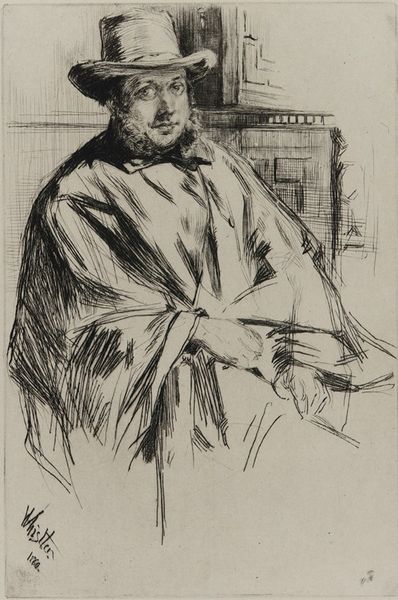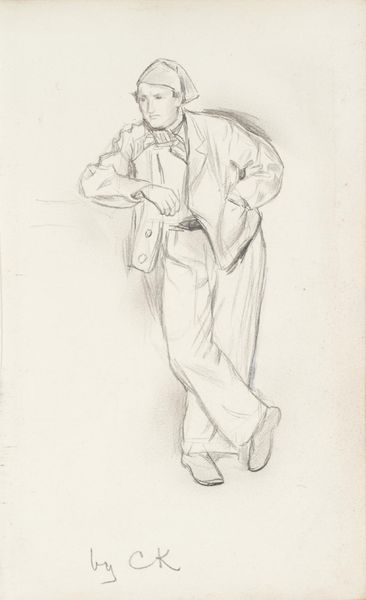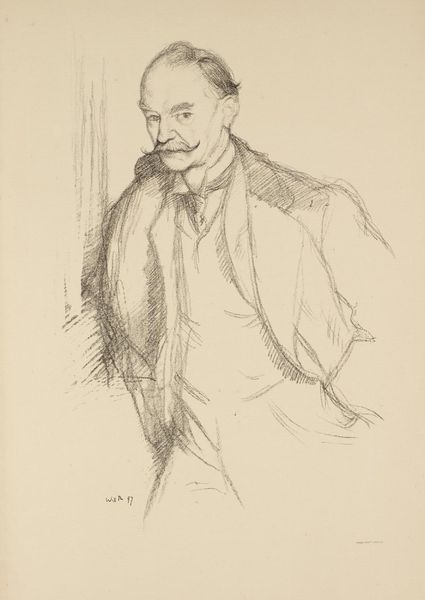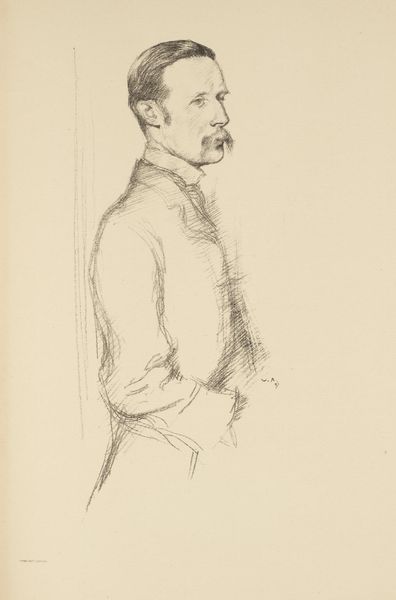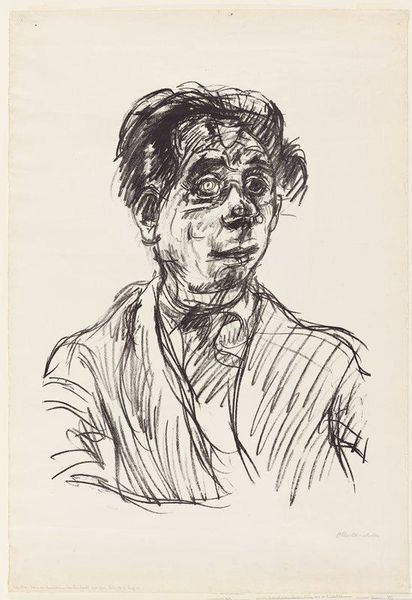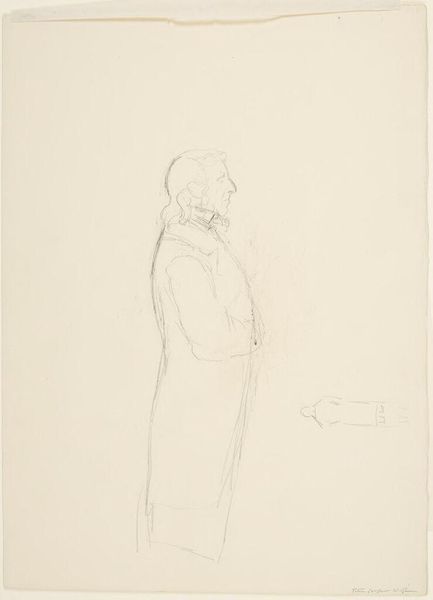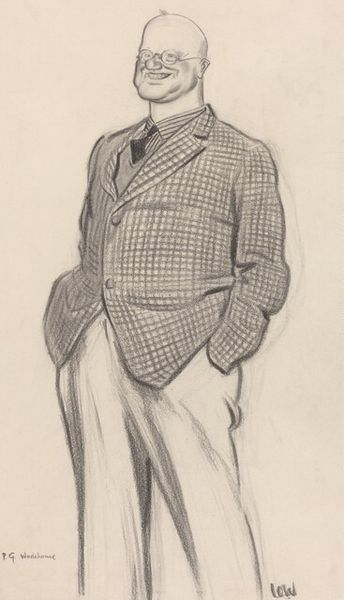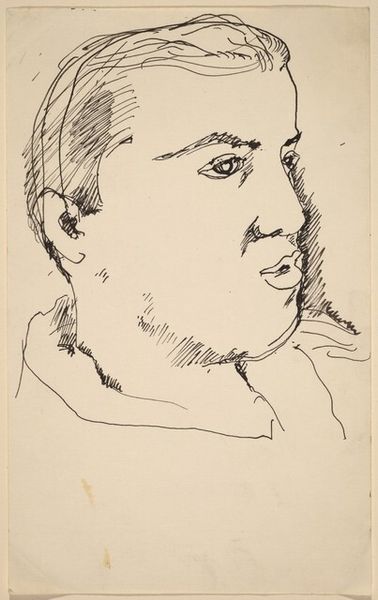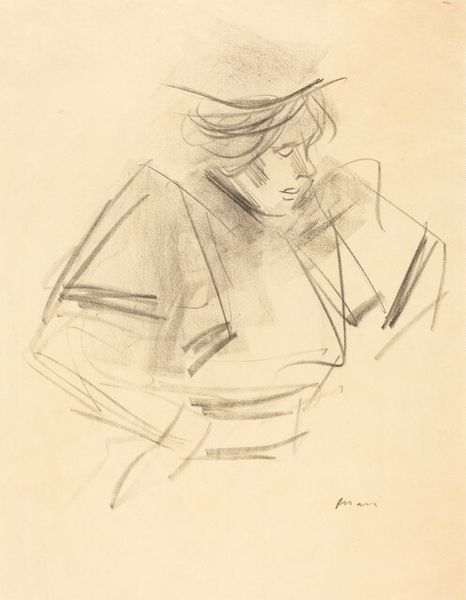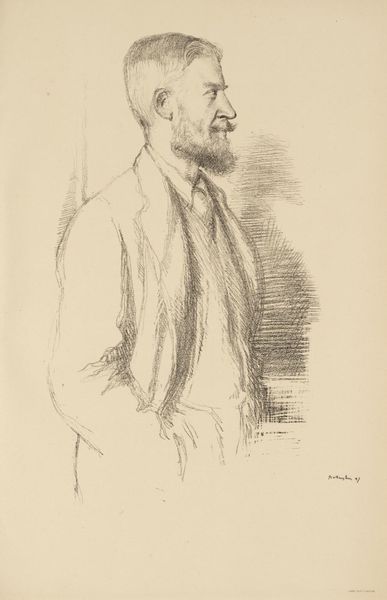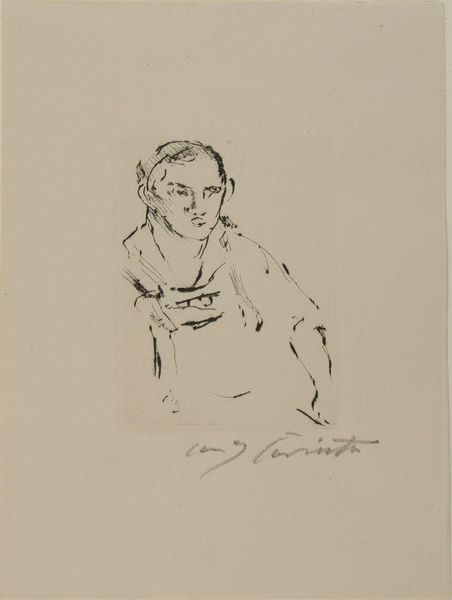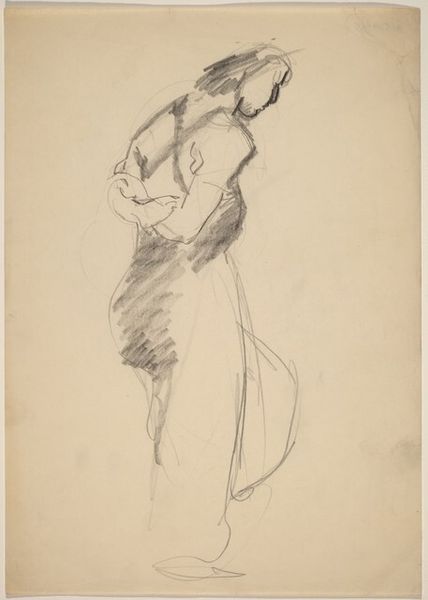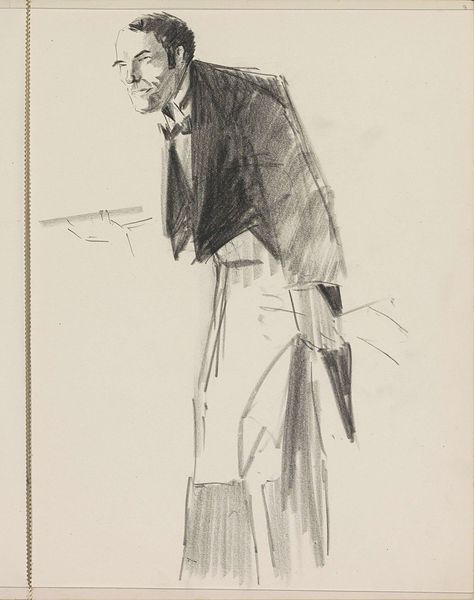
Dimensions: sheet: 37.5 x 25 cm (14 3/4 x 9 13/16 in.)
Copyright: National Gallery of Art: CC0 1.0
Curator: Rothenstein’s pencil drawing, "George Gissing," from 1897, strikes me as quite melancholy. Editor: Melancholy? I see a stark and pragmatic representation, stripped down to graphite on paper. It highlights the artist’s technical process, doesn’t it? Curator: I suppose. I’m reacting to Gissing’s averted gaze. He's looking away, lost in thought. His eyes lack luster, creating a sense of quiet desperation. Editor: Think about the material conditions that allowed for such portraiture. The availability of affordable paper and pencils. It allowed Rothenstein to create such work. This drawing embodies a moment of increased access to both artistic creation and representation. Curator: True, the romantic era also turned towards the inner psychological space in its portraits. Do you see symbols that underscore his profession or status? His tie and jacket don't reveal much about him as a novelist. Editor: It's tempting to see that suit as mere bourgeois convention, obscuring the labor and often difficult existence of an artist. The paper itself bears witness to the drafting, erasing, and redrafting. Every line tells a part of the labor. Curator: I concede. Gissing’s gaze, coupled with Rothenstein’s economic rendering, embodies late 19th-century disillusionment. His novels often explored the bleak realities of lower-class existence. Perhaps, then, Rothenstein wanted to transmit this to the viewer, too. Editor: It’s not merely about representation. Rothenstein’s process allows us a glimpse into the relationship between artist, sitter, and the means of production. Pencil strokes that translate an interaction that time has long obscured. Curator: Fair enough. Ultimately, seeing this portrait urges us to ponder the weight of internal worlds made external by artists. It prompts one to contemplate Gissing's place in the cultural memory and its reflection of larger societal attitudes. Editor: Yes, in focusing on materiality, we can more carefully evaluate artistic intentions. Hopefully that is also what our listeners have come to take away.
Comments
No comments
Be the first to comment and join the conversation on the ultimate creative platform.
